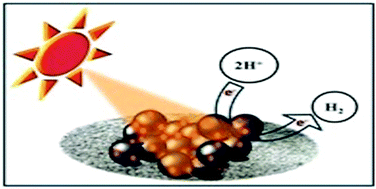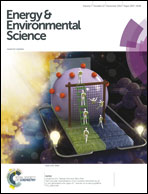Throwing light on platinized carbon nanostructured composites for hydrogen generation
Abstract
In the present study, we have synthesised carbon nanoparticles (CNPs) through a relatively simple process using a hydrocarbon precursor. These synthesised CNPs in the form of elongated spherules and/or agglomerates of 30–55 nm were further used as a support to anchor platinum nanoparticles. The broad light absorption (300–700 nm) and a facile charge transfer property of CNPs in addition to the plasmonic property of Pt make these platinized carbon nanostructures (CNPs/Pt) a promising candidate in photocatalytic water splitting. The photocatalytic activity was evaluated using ethanol as the sacrificial donor. The photocatalyst has shown remarkable activity for hydrogen production under UV-visible light while retaining its stability for nearly 70 h. The broadband absorption of CNPs, along with the Surface Plasmon Resonance (SPR) effect of PtNPs singly and in composites has pronounced influence on the photocatalytic activity, which has not been explored earlier. The steady rate of hydrogen was observed to be 20 μmol h−1 with an exceptional cumulative hydrogen yield of 32.16 mmol h−1 g−1 observed for CNPs/Pt, which is significantly higher than that reported for carbon-based systems.


 Please wait while we load your content...
Please wait while we load your content...